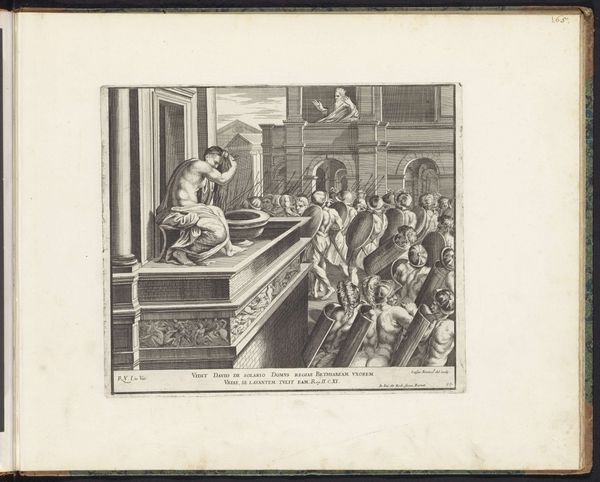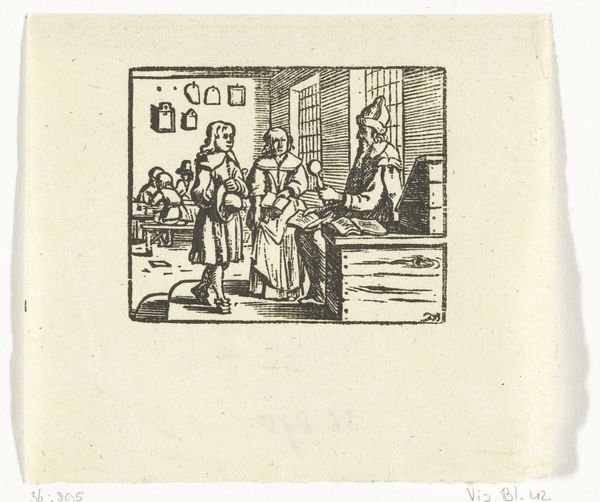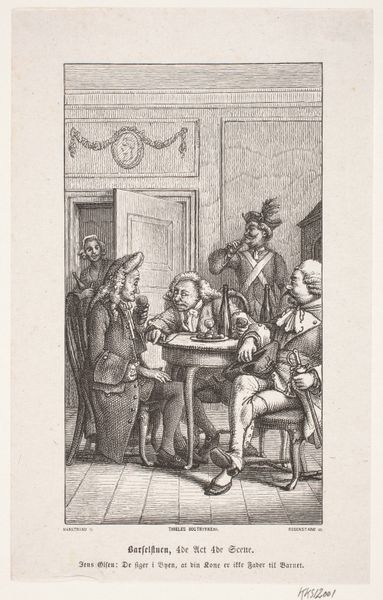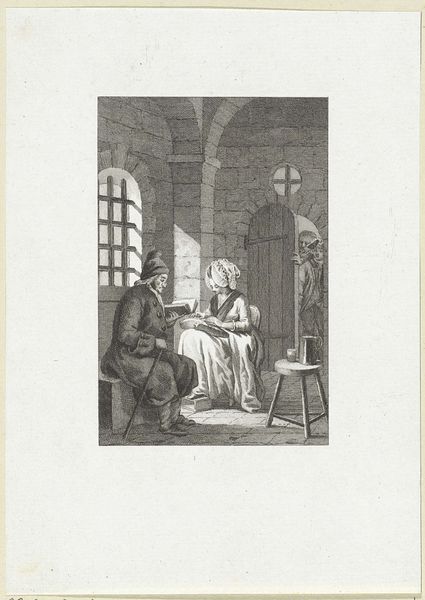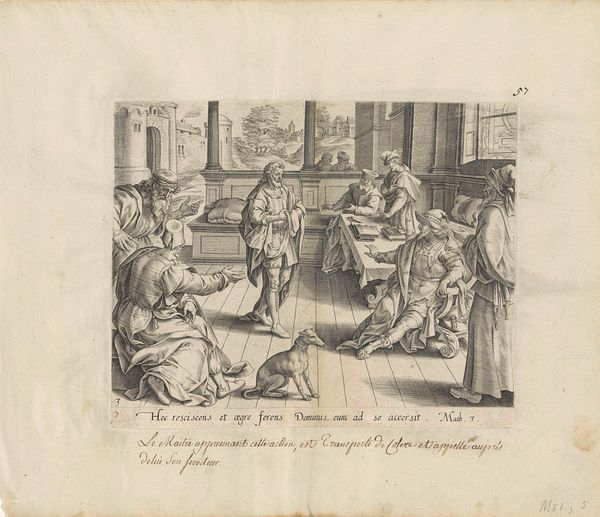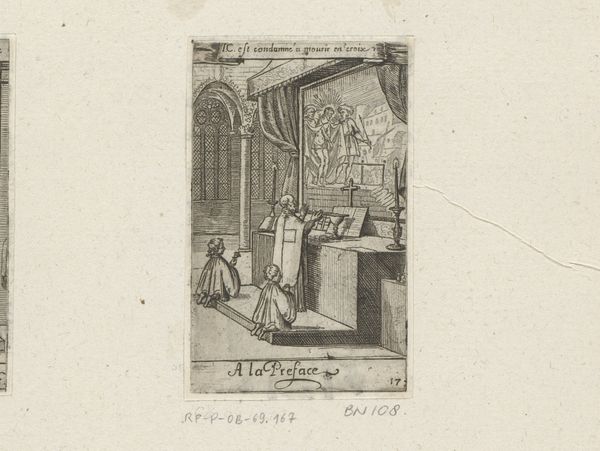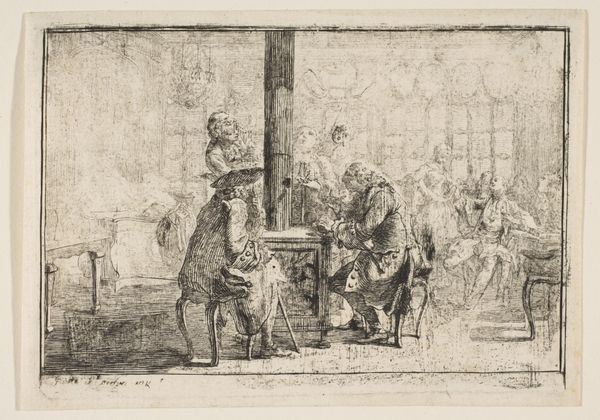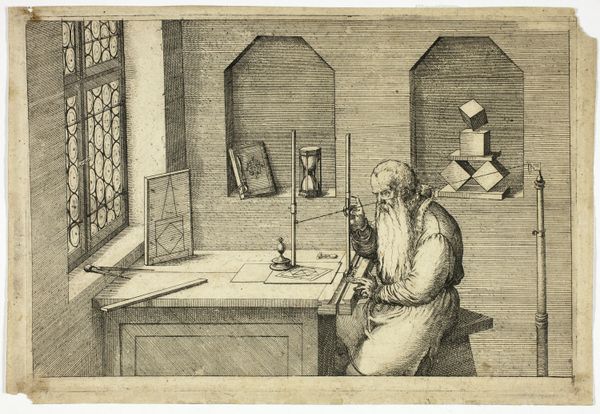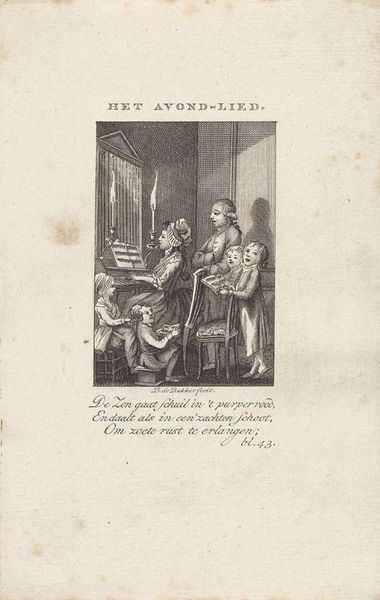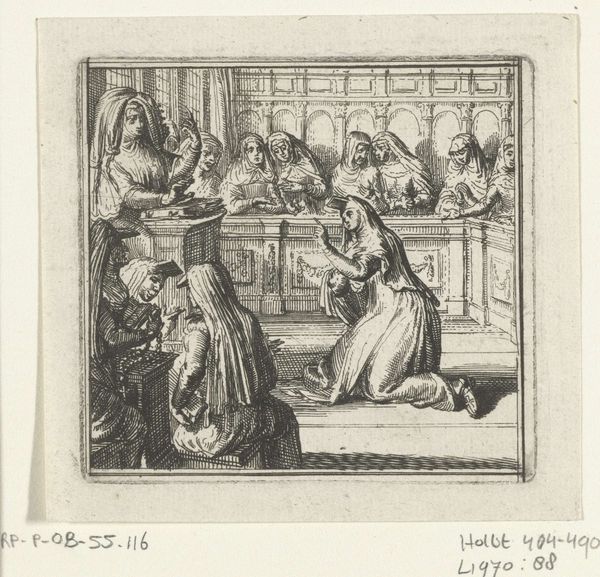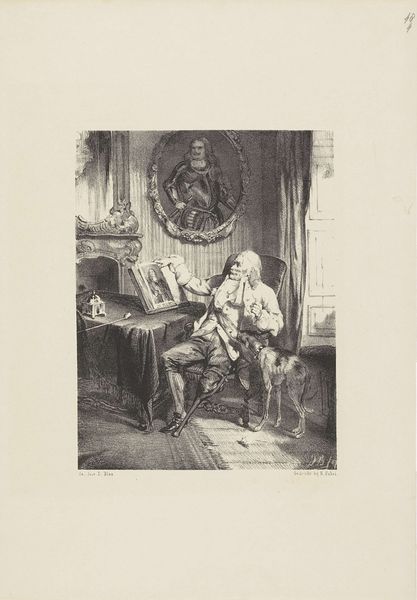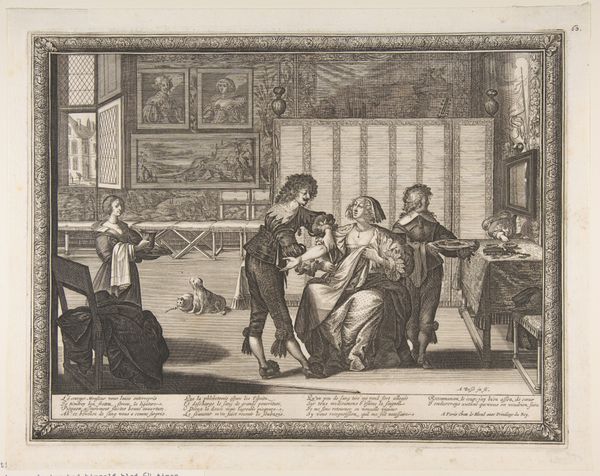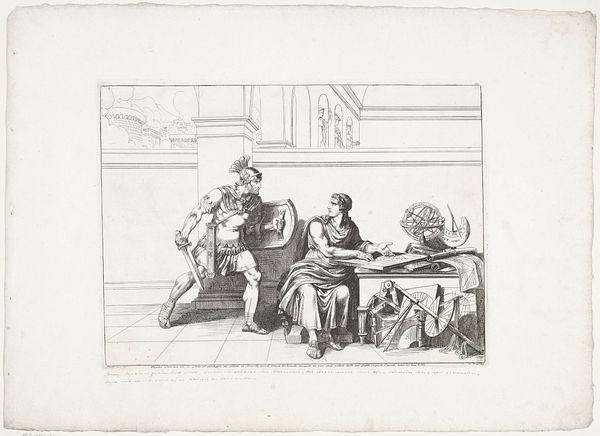
print, woodcut, engraving
#
narrative-art
#
dutch-golden-age
# print
#
figuration
#
woodcut
#
line
#
genre-painting
#
engraving
Dimensions: height 74 mm, width 86 mm
Copyright: Rijks Museum: Open Domain
Curator: Dirck de Bray’s “Schoolmeester,” likely created between 1650 and 1694, offers us a glimpse into a 17th-century classroom, captured in woodcut or engraving. Editor: Immediately striking is the graphic quality. The stark black lines carve out a rigid space and imbue the scene with a quiet severity. It’s austere, but also intensely focused. Curator: Considering its time, it certainly raises questions about the role of education within Dutch society. Notice the schoolmaster’s garb, his imposing figure compared to the children. It makes me wonder about power dynamics within these early learning environments, who had access to them, and what sort of social structures they reproduced. Editor: Yes, but let's focus on how those dynamics are constructed visually. The artist employs linear perspective, drawing the viewer's eye toward the background where we see the backs of seated students, literally diminishing their presence in comparison to the towering teacher. Note also the density of the lines used to describe the master as opposed to the open areas in the background. It clearly demonstrates the hierarchy of importance. Curator: Precisely. That boy in the foreground seems to be bringing the teacher a wrapped present. Does this suggest a potential critique of class dynamics and the means of social mobility, or perhaps the simple economic exchange upon which systems of education depend? It hints at issues of privilege, of who might be offered preferential treatment and what that may mean. Editor: Intriguing, yet consider that those stark lines I mentioned aren't just creating an emotional effect. Look at the pattern formed by the parallel hatching describing volume, shadow, and texture throughout the composition. There’s a meticulous order in that system; line defines every fold, every contour. That control of the line communicates something about that rigid society you mentioned. Curator: An apt connection. This seemingly simple image opens to many potential analyses of Dutch social mores. Considering de Bray's background and affiliations as a Catholic artist working in the Netherlands, we should also examine what statements about interreligious dynamics he may be subtly introducing. Editor: I appreciate that wider socio-political context you bring, while for me it begins and ends with how this carefully organized composition creates meaning. Curator: Well, isn't it gratifying how formal considerations and political history coalesce to add complexity to a seemingly commonplace scene.
Comments
No comments
Be the first to comment and join the conversation on the ultimate creative platform.
